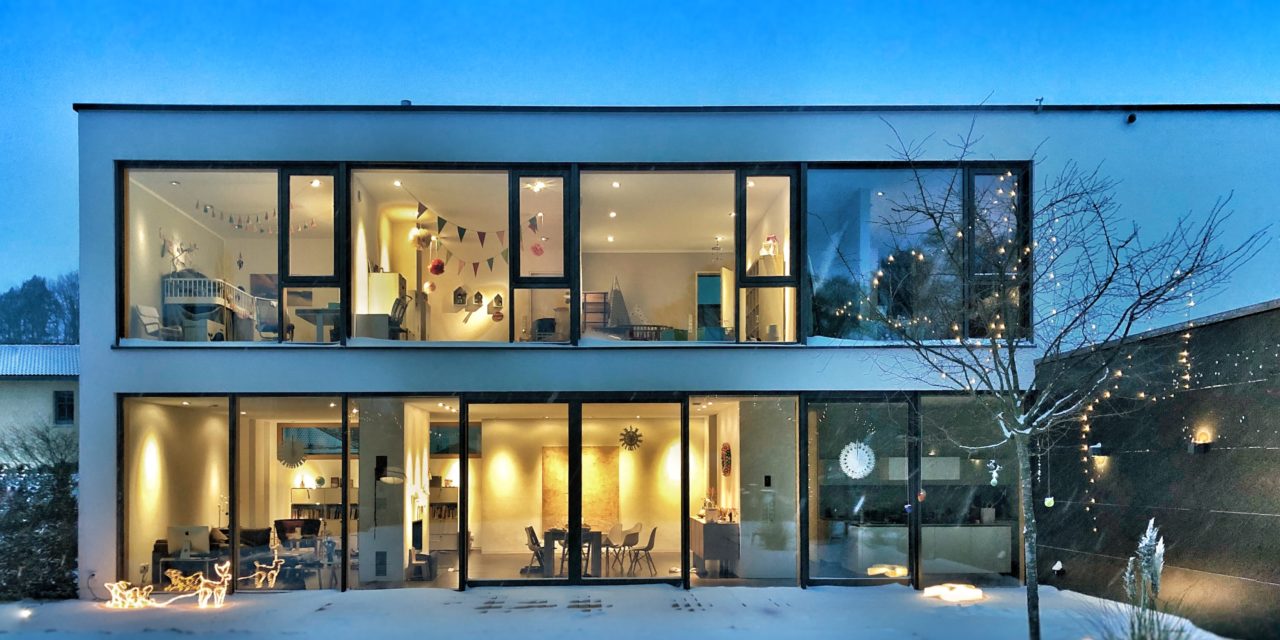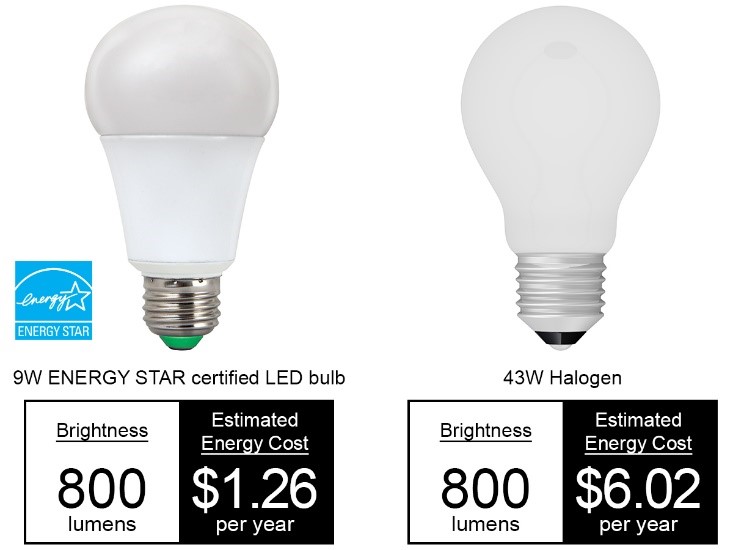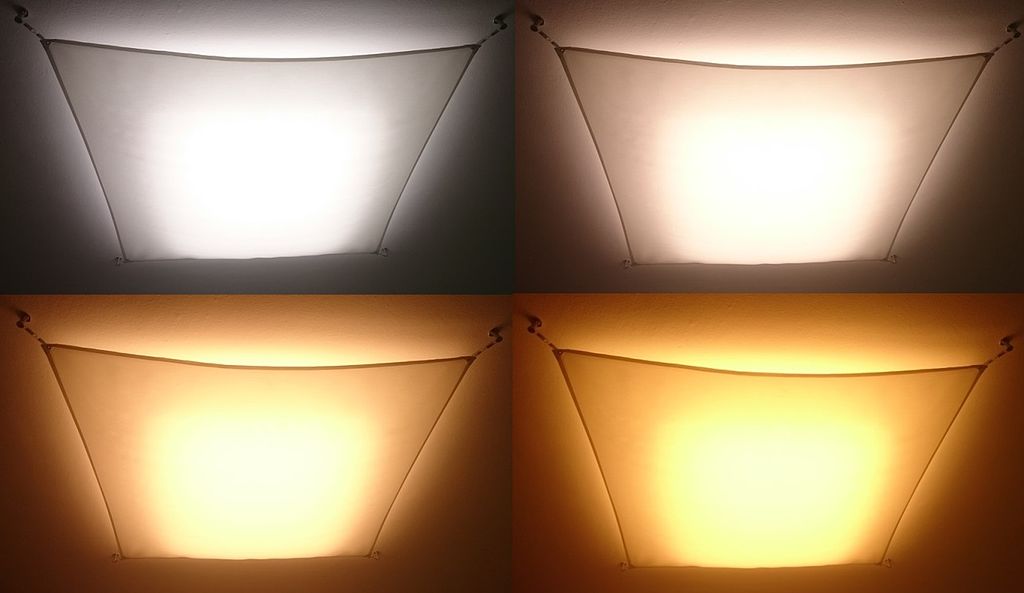Some of the links in this article are affiliate links, meaning at no additional cost to you, we will earn a commission if you click through and make a purchase. Thank you for helping us continue to bring you great content.
By Lois I. Hutchinson
Editor, Elemental Green
A typical home now uses more appliances and electronics than ever, but average energy use per household is trending down due, in part, to high-efficiency devices like LED light bulbs. The newest LED technology is approaching maximum efficiency: the theoretical point where every scrap of power that goes in produces light power coming out.
Compact fluorescent lamps (i.e, CFL light bulbs) were an energy-efficient alternative at the turn of the twenty-first century, but they presented potential health risks in the home. CFL’s ultraviolet light emissions could be hazardous when used close-up like in a desk lamp, particularly to certain sensitive individuals. Plus, the presence of mercury in CFLs requires careful handling and recycling, and elaborate cleanup precautions when bulbs are broken. There are many bulb options out now where LEDs have bases engineered to replace CFLs. This is a good thing to do when the opportunity arises. Please be sure to recycle CFLs per your local regulations.
LEDs use even less energy than CFLs, last longer, and do not contain mercury, making them king of the counter in the lighting department. Newer home lighting fixtures, such as downlight cans and undercabinet lights, may not have replaceable bulbs at all. The LEDs are hardwired in, so when the product fails after many years, the entire fixture is recycled. This can allow a lot of freedom in designing fresh, modern chandeliers and desk lamps. And they might provide better lighting for your space at a reasonable price premium.
But let’s stick with LED light bulbs. As the technology improves, LED light bulbs that were once very expensive can be had for $5 or less. The savings in energy cost, year after year, pays for the investment many times over.
BRIGHTNESS AND ENERGY EFFICIENCY
Energy Star sets light output requirements for a “comparable to 60-watt incandescent” or “comparable to 100-watt incandescent” light bulb; along with minimum efficiency standards. Light output is measured in terms of “lamp lumens” and the efficiency, referred to as efficacy, in terms of “lumens per watt.” These are parameters of the light bulb itself and do not reference how much light you will get out of the light fixture you are putting it in. Lenses, shades, and mounting positions all affect “delivered lumens,” which is a topic for another day.
The Energy Star label ensures that an LED light bulb has been tested and proven to live up to a whole host of performance measures: brightness, instant-on at the flick of a switch, energy efficiency, consistent light output over time, lack of visible flicker, and an absence of general color weirdness. After all, a light bulb isn’t efficient at all if you hate it and get rid of it.
Lifespan
Assuming the light is burning for at least 3 hours a day, a traditional incandescent bulb lasted about a year before it needed replacing. Quality LEDs can be expected to last at least 15 times longer. In fact, some may never burn out. They’re so tough that they will gradually fade in light output until they’re just not producing enough light and need to be replaced. The Lighting Facts label that you’ll find on the LED light bulb’s packaging lists “rated life,” which statistically is the time (in burning hours) it should take before half of the light bulbs of that make and model burn out.
Again, whether an LED light bulb is “rated” to last 23 years versus 20 years for a comparable product is not particularly relevant. It is far more important to choose a quality product from a manufacturer that will stand behind its warranty in case a defective light bulb burns out or fades early. Look for the Energy Star label to ensure that your minimum warranty is 3 years.
Because LEDs last many times longer than previous light bulb technologies, they reduce your household waste stream. Remember that when they do burn out, or start fading in light output significantly, LEDs contain semiconductors and must be recycled as e-waste.
Colors of White LED light bulbs
Dimming
LED light bulbs normally do not dim and will not operate properly on a circuit with a dimmer. Some LEDs marked “Dimmable” contain electronics that will respond to a standard incandescent-type dimmer, but they can be finicky and may still flicker or shimmer. Many LED replacement bulb manufacturers publish lists of specific dimmers that are compatible with specific LED light bulbs.
Even with a compatible light bulb–dimmer configuration, you will not see a progressive warming of the light’s color as it dims down to candlelight levels. Look for “dim-to-warm” or similar labeling for products that will emulate the way that incandescent light bulbs warm in color as they dim down.
Color-tunable LED light bulbs take advantage of LED technology to both dim white light and shine in brilliant hues of your favorite colors. They require a special controller or app and are attached to your household wifi or smart home system. Though they’re fun, they likely do not offer the benefits of long life and energy efficiency that have made LED light bulbs the clear choice for the future of our planet.









![10 Steps Toward a Zero Energy Home [Infographic]](https://elemental.green/wp-content/uploads/2016/04/cbfb-440x264.jpg)

